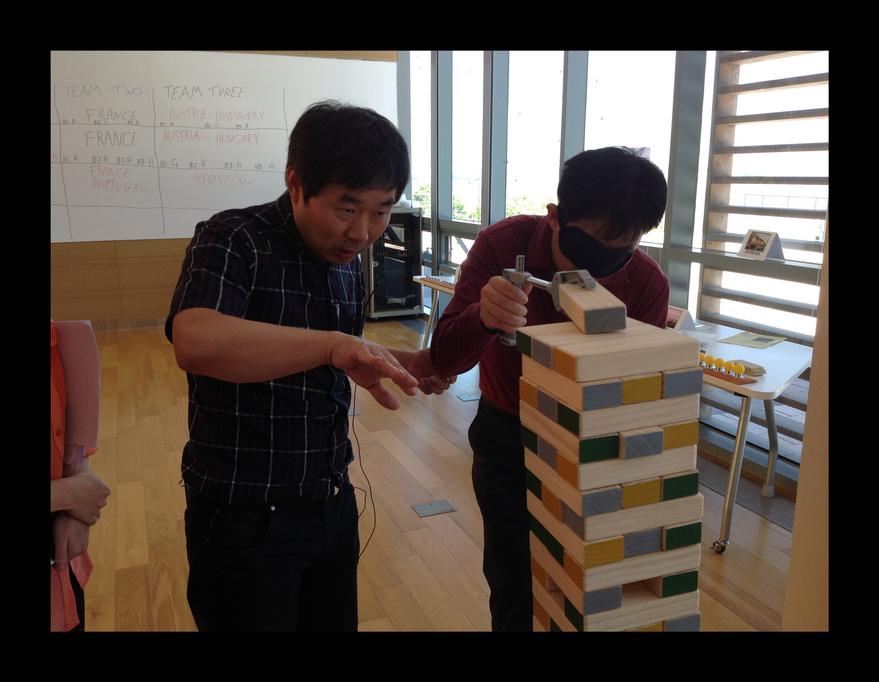THE ROLE OF BUSINESS SIMULATIONS IN

CORPORATE TRAINING: A PRACTICAL GUIDE (1/5)

According to a report by Harvard Business Review, companies that implement integrated training programmes that include simulations see a 15-25% increase in their return on investment compared to companies that rely on traditional training methods.
Implementing a business simulation for corporate training requires a clear understanding of the desired outcomes and involving participants in the planning process to ensure alignment with company objectives and increased ownership over the results.
Step 1
Start With The End In Mind 1.
It is also important to involve the participants in the planning process. This not only helps to ensure that the simulation is relevant to their needs and aligned to the company’s objectives, but it also gives them ownership and a sense of accountability for the outcomes.

NEW BLOG
THE ROLE OF BUSINESS SIMULATIONS
IN CORPORATE TRAINING: A PRACTICAL GUIDE (2/5)

Integrating business simulations into a broader learning programme is essential for increasing their effectiveness. According to a report by Harvard Business Review, companies that implement integrated training programmes that include simulations see a 15-25% increase in their return on investment compared to companies that rely on traditional training methods
By integrating the simulation into a broader learning programme, participants can gain a deeper understanding of how the simulation fits into their job roles and the wider business context.
Step 2
2. Run The Simulation As Part Of A Wider Programme

This will also enable them to apply the knowledge and skills learned in the simulation to real-life situations, increasing the chances of the training being successful and driving behavioural change.
Large-scale events

NEW BLOG
THE ROLE OF BUSINESS SIMULATIONS


IN CORPORATE TRAINING: A PRACTICAL GUIDE (3/5)
Designing a business simulation that strikes a balance between cost, learning objectives, duration, and the number of participants can result in a highly effective learning experience that provides participants with valuable insights and skills to navigate real-world business scenarios.

While business simulations can be expensive, it is essential not to cut corners or try to squeeze too much into one simulation. Trying to achieve too much in a single simulation can have the opposite effect and dilute the learning outcomes.
Step 3
3. Balance Participant Numbers And Duration To Ensure Effective Learning Experience
It is also important to consider the number of participants involved in the simulation. Having too many participants can also dilute the learning outcomes and limit the ability of participants to engage with the simulation fully
NEW BLOG
Virtual Simulations
THE ROLE OF BUSINESS SIMULATIONS IN CORPORATE TRAINING:

A PRACTICAL GUIDE (4/5)
According to a study published in the Journal of Educational Psychology, incorporating elements of fun and play into the simulation can enhance learning outcomes and improve participant engagement.

A well-designed simulation should immerse participants in the scenario, creating an authentic experience that resonates with them. This could include creating characters, scenarios and environments that are relatable to the participants
Step 4
4. Make It Fun, Engaging And Relevant
Incorporating gamification techniques, such as points and rewards, can increase engagement and motivation

Gamification
NEW BLOG
THE ROLE OF BUSINESS SIMULATIONS IN CORPORATE TRAINING: A PRACTICAL GUIDE (5/5)

The use of pre and post-simulation assessments can be a useful tool in measuring the impact of the simulation. These assessments can measure a range of outcomes, including knowledge retention, behavioural change, and overall satisfaction.
Step 5
5. Measure The Outcomes
In a study conducted by the Society for Human Resource Management, 74% of companies that used pre and postsimulation assessments reported a positive impact on employee performance.
Measuring the outcomes of the business simulation is critical to ensure that the desired outcomes have been achieved. The key to measuring the outcomes is to establish clear objectives and goals at the beginning of the planning process. Ifyouwishtolearnmore,read

NEW BLOG
ournewblogtoday
https://www.mdatraining.com/blog











